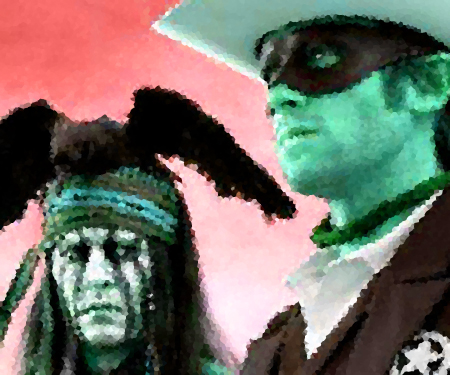How Sound Design Gives Life to The Lone Ranger
I went into The Lone Ranger with a sense of wariness. Many previous reviews I had read stated its low box office draws and its poor portrayal of First Nations culture. However, the movie did not disappoint me, and, in fact, exceeded my low expectations. But really, I was walking into the film with a speculative eye to examine the overall sound design and music score.
I felt much of the plot pulled from the previous collaboration of Jerry Bruckheimer and Johnny Depp in the Pirates of the Caribbean franchise. This was shown in the supporting characters. For example, in both movies (The Lone Ranger and Pirates of the Caribbean) there is a male character that belongs on the “bad” side and enjoys dressing in drag. Johnny Depp also played both characters (Tonto and Captain Jack Sparrow) with the same care free, whimsical outlook on the outside forces stacking against his character in the movie.
The music both (diegetic and non-diegetic) was exactly what you would expect for a Jerry Bruckheimer produced epic. The memorable classic Lone Ranger theme weaved in and out of the bands and choirs seen on screen. The score created a powerful ending scene, especially to the finale of the movie.
The sound effects were particularly strong in one battle scene in which a menagerie of sound effects happens in rapid succession creating a lasting impact on the listener/viewer. Some of the sound effects were overpowering during the movie (especially the opening scene featuring the inquisitive little boy eating his peanuts) and took away from the realism. However, the long periods of almost complete silence leading up to the pending disasters on screen made the visual effects that much more powerful.
My favourite scene from the perspective of sound design would have to be the scene in which The Lone Ranger and Tonto go and inquire within Red Harrington’s brothel. Everything from the clicks of the gun inside her peg leg to the background party ambience created a strong realistic scene. The transition from this chaotic scene to the next scene featuring the love interest, Rebecca on a quiet river side made it stand out even more vividly.







Recent Comments